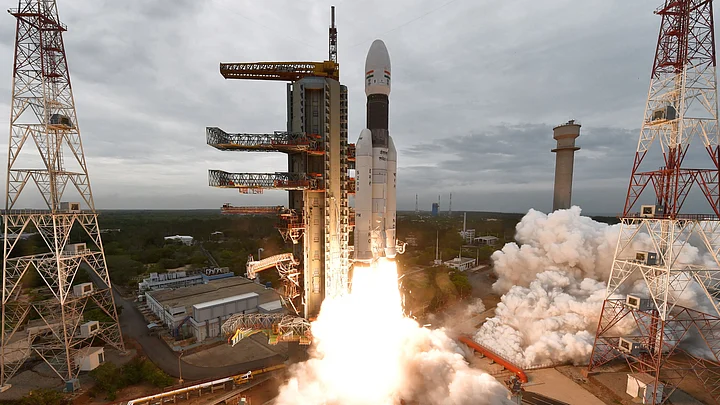China on Tuesday, 23 July congratulated India on the successful launch of the Chandrayaan-2 and expressed its desire to work with New Delhi for outer space exploration as both countries stepped up their space programmes including plans to build their own space stations.
"So, congratulations. We have noted the relevant reports and we welcome the successful launch of this probe by India," Foreign Ministry spokesperson Hua Chunying told a media briefing in response to a question.
India on Monday, 22 July successfully launched its second lunar mission Chandrayaan-2 on board its powerful rocket GSLV-MkIII-M1 from the spaceport in Sriharikota to explore the unchartered South Pole of the celestial body by landing a rover.
"The exploration of outer space including the Moon, is the common cause of all human beings. They should contribute to the welfare of all people," she said.
"China is committed to the peaceful use of outer space and we actively engaged in international communication and cooperation on the issue," she said.
“We would like to work with India for outer space exploration to deliver more benefits to mankind.”Hua Chunying, Chinese Foreign Ministry spokesperson
Hours after the launch on Monday, China's lunar exploration programme chief Wu Weiren wished India's Chandrayaan-2 a success and said China, which is actively pursuing its own moon mission, is not in competition with any other country in planning its space missions.
International efforts to explore the Moon - including made by India, Israel and the US - which is determined to send its astronauts back to the Moon within five years, will be pressuring and motivating China's lunar probe missions to further develop, Wu was quoted as saying by the state-run Global Times commenting on the successful launch of the Chandrayaan-2 into space.
"The international trend will not play a decisive role in China's planning on its lunar missions, and China is not going to compete with any one over the matter," Wu said.
Ruling out any competition with India, Wu said China's space projects have always been carried out in an independent and controllable fashion.
But at the same time Chinese space scientists kept a close watch on India's space programme specially after India successfully sent Mangalyaan probe to Mars in 2013, becoming the first country to achieve the complex feat.
In January this year, China’s Chang’e-4 spacecraft scripted history when it made the first-ever soft landing on the far side of the moon. The rover Yutu-2 then rolled off the lander to explore its surroundings.
For its part, India opted to explore the South Pole of the Moon which too has not been explored so far. China too announced plans to explore South Pole with its later unmanned missions to the Moon in the next few years.
China is planning several space missions, including to Mars, by 2020 as well as building its own space station by 2022.
Last month, India also announced plans to build its own human space station "Gaganyaan" in the next five to seven years.
The two countries are also planning manned missions to Moon.
Wu said the Chinese scientists are conducting scientific feasibility studies on sending the country's astronauts to the Moon.
"Sending Chinese people to the Moon won't be too much of a problem," Wu said but declined to reveal a detailed schedule for a manned mission to the Moon, the Global Times said.
Pei Zhaoyu, deputy director of the Lunar Exploration and Space Engineering Centre with the CNSA, who is also the deputy chief designer of the country's third-phase mission of lunar exploration program, said that "China's future lunar exploration, including Chang'e-6 and those following it, will be determined by the country's own technology capability and overall economic strength," the daily reported.
“China will not race against other countries, but will follow its own schedule.”Pei Zhaoyu, Deputy Director, Lunar Exploration and Space Engineering Centre
China still has unmanned Chang'e-5, -6, -7, -8 missions coming up until 2030, Wu Yanhua, deputy director of the CNSA said in January.
While Chang'e-5 will return with samples from the Moon in a mission scheduled around 2020, Chang'e-6 will conduct a similar mission, but with samples from the South Pole of the Moon.
Chang'e-7 will comprehensively explore the Moon, whereas Chang'e-8 will explore the possibility of building an international lunar research base, according to the paper. Chang'e-8 will test 3D printer technology in hopes of assisting future lunar residents.
"The landing location and research goals for Chang'e-6 will be later determined, after taking the performance of Chang'e-5 into consideration," Pei said.
(At The Quint, we question everything. Play an active role in shaping our journalism by becoming a member today.)
